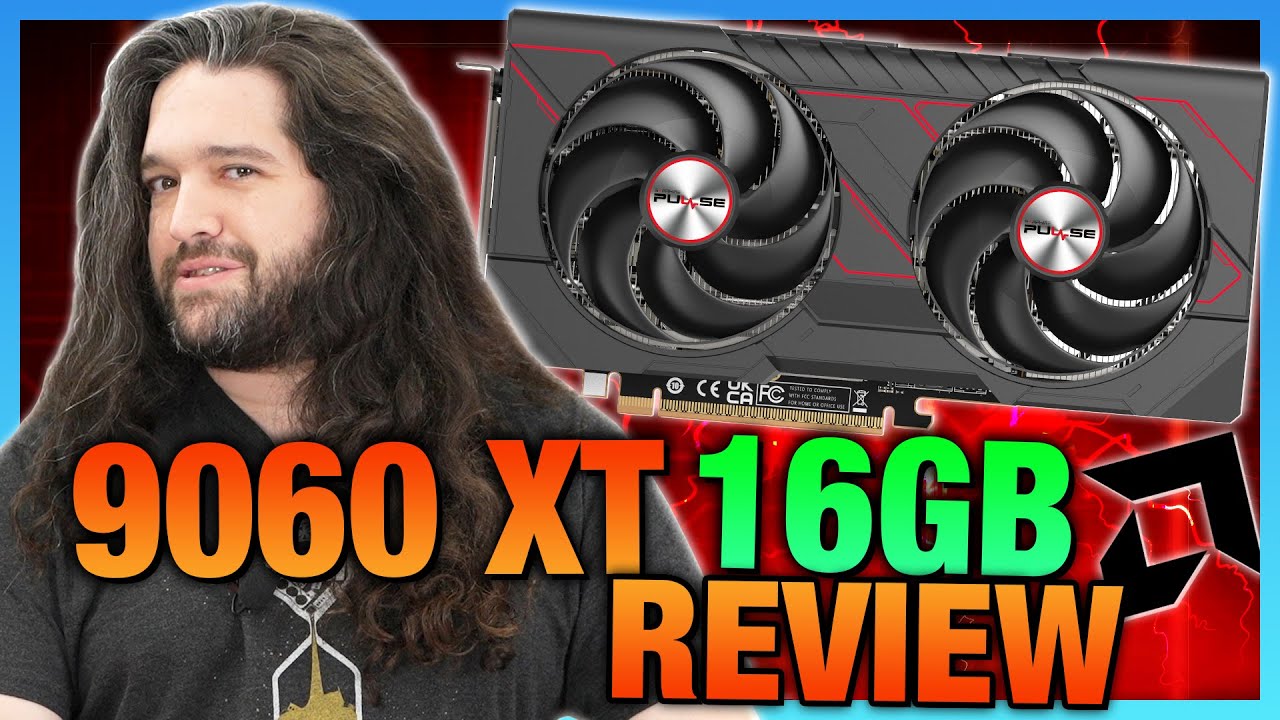The video reviews the AMD Radeon RX 9600 XT 16GB GPU, highlighting its solid rasterized gaming performance and improved ray tracing capabilities, but criticizing its VRAM limitations and AMD’s often misleading marketing tactics. The reviewer advises consumers to be cautious about AMD’s product claims and recommends waiting for clearer pricing and market positioning before purchasing.
The video provides a detailed performance comparison between the AMD Radeon RX 9600 XT 16GB GPU and its Nvidia counterpart, the RTX 5060, across various gaming benchmarks. The RX 9600 XT generally outperforms the 5060 by 2% to 17% at 1080p, with more significant gains at 1440p and mixed results at 4K. In ray tracing scenarios, AMD’s improvements are evident, sometimes matching or surpassing older AMD cards like the 7700 XT, especially when VRAM limitations come into play, which can give AMD an edge in specific VRAM-constrained situations. Overall, AMD’s ray tracing performance has improved significantly over previous generations, but still falls short of Nvidia’s dominance in RT-heavy titles.
The reviewer criticizes AMD’s marketing and product positioning, highlighting the company’s tendency to oversell features like VRAM and to make questionable claims about their products’ suitability for gamers. For example, AMD’s assertion that most gamers only need 8GB of VRAM is challenged, given the reality that many modern games and workloads require more VRAM, especially at higher resolutions. The reviewer points out AMD’s history of questionable marketing decisions, such as promoting 4GB VRAM cards as sufficient for current gaming, despite earlier statements indicating otherwise. This inconsistency and overhyping create confusion and undermine consumer trust, especially when AMD releases products that don’t align with their proclaimed target audience.
The review also delves into the practical performance of the RX 9600 XT across various titles, including demanding games like Dragon Stoma 2, Final Fantasy 14, Starfield, and Cyberpunk 2077. At lower resolutions, the RX 9600 XT performs well, often matching or exceeding older AMD cards or mid-range Nvidia GPUs like the 3070 Ti. However, in ray tracing and VRAM-heavy scenarios, the card struggles, especially at 4K with RT enabled, where VRAM limitations cause stuttering and unplayable experiences. The reviewer emphasizes that while the card can be a good performer in rasterized workloads, its real-world usability diminishes in demanding RT or VRAM-constrained situations.
Efficiency benchmarks reveal that the RX 9600 XT is relatively power-efficient, often delivering better frames per watt than larger, more expensive cards like the 9070 XT. In titles like Starfield and Final Fantasy 14, the card maintains a good balance between power consumption and performance, making it an attractive option for those seeking efficiency. However, the overall value proposition is complicated by AMD’s pricing and marketing strategies, which the reviewer criticizes heavily. The current landscape is muddled by inflated or unpredictable prices, making it difficult to assess true value without considering future pricing adjustments.
In conclusion, the reviewer expresses frustration with AMD’s approach to product launches, including their marketing tactics and VRAM strategies, which seem designed to mislead or artificially inflate perceived value. While the RX 9600 XT offers solid performance in rasterized games and improved ray tracing over previous AMD cards, its limitations in VRAM-heavy scenarios and inconsistent marketing diminish its appeal. The reviewer emphasizes the importance of waiting for clearer pricing and market positioning before making purchasing decisions, advocating for transparency and honesty from AMD and other GPU manufacturers. Overall, the review combines detailed benchmarks with candid criticism of AMD’s current product and marketing strategies.
